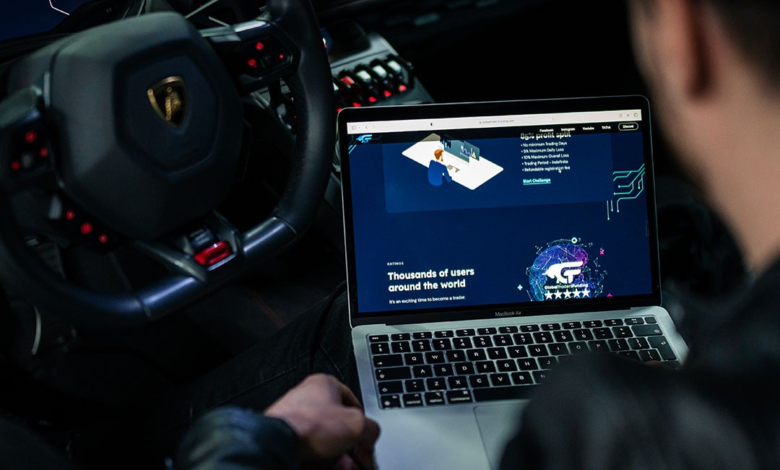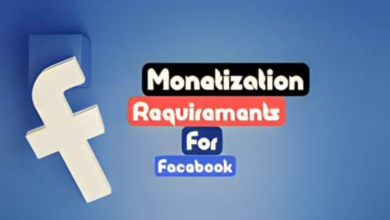How to Develop Your Website with ChatGPT: A Step-by-Step Guide
how to develop your Website with Chatgpt

How to Develop Your Website with ChatGPT: A Step-by-Step Guide
Introduction: In today’s digital landscape, incorporating conversational AI into your website can enhance user engagement and provide personalized experiences. One powerful tool for achieving this is ChatGPT, an advanced language model developed by OpenAI. In this step-by-step guide, we’ll explore how you can develop your website using ChatGPT to create an interactive and dynamic user interface.
- Understand ChatGPT’s Capabilities: Before integrating ChatGPT into your website, familiarize yourself with its capabilities and limitations. ChatGPT can generate human-like responses to user input, making it ideal for chatbots, virtual assistants, and interactive features. However, it’s important to remember that ChatGPT operates based on pre-existing text data and may occasionally produce incorrect or nonsensical responses.
- Determine the Purpose and Use Cases: Identify the specific purpose of integrating ChatGPT into your website. Do you want to provide customer support, generate dynamic content, or offer interactive conversational experiences? Determine the use cases that align with your website’s goals and user expectations.
- Choose an Integration Method: Select the integration method that best suits your technical requirements and expertise. You have several options, including: a. ChatGPT API: Utilize the OpenAI API to make API calls from your website and receive responses from ChatGPT in real-time. b. Pre-built Chatbot Platforms: Explore pre-built chatbot platforms like Dialogflow, IBM Watson Assistant, or Microsoft Bot Framework, which offer integration options with ChatGPT. c. Custom Development: For more advanced users, consider building a custom integration using programming languages like Python or JavaScript.
- Design User Flows and Conversation Scenarios: Map out user flows and conversation scenarios to provide a smooth and intuitive experience. Consider potential user inputs, define desired responses, and plan for different conversation branches based on user interactions. This step ensures that ChatGPT understands and responds appropriately to user queries.
- Implement User Interface: Create an intuitive user interface (UI) to facilitate user interactions with ChatGPT. Design a chat window or interface that displays the conversation history and allows users to input queries or statements. Incorporate design elements that align with your website’s branding and overall aesthetic.
- Train and Fine-tune ChatGPT (Optional): If you require more control over ChatGPT’s responses, you can fine-tune the model using your own dataset. This step involves training ChatGPT on specific prompts and desired responses to better align with your website’s unique requirements. However, fine-tuning requires technical expertise and substantial computational resources.
- Test and Iterate: Thoroughly test your ChatGPT integration to ensure its functionality, responsiveness, and accuracy. Conduct extensive user testing and gather feedback to identify areas for improvement. Iterate on the design, conversation scenarios, and user flows to enhance the user experience and optimize the performance of ChatGPT.
- Monitor and Maintain: Regularly monitor the performance of your ChatGPT integration. Address any issues that arise promptly and provide ongoing maintenance to ensure optimal functionality. Stay updated with the latest advancements in conversational AI to leverage new features and enhancements for your website.
Conclusion: Integrating ChatGPT into your website can elevate user engagement and deliver personalized experiences. By understanding its capabilities, selecting the right integration method, designing intuitive user flows, and testing thoroughly, you can develop a dynamic and interactive website that leverages the power of ChatGPT. Stay agile, monitor performance, and continue to enhance your ChatGPT implementation to provide an exceptional user experience on your website.
Understanding the capabilities and limitations of ChatGPT is crucial before integrating it into your website. Here are some key points to keep in mind:
- Natural Language Processing: ChatGPT utilizes natural language processing techniques to generate responses that resemble human-like conversation. It can understand user inputs and generate coherent and contextually relevant replies.
- Chatbot Functionality: ChatGPT is well-suited for building chatbots or virtual assistants on your website. It can handle user queries, provide information, assist with tasks, and engage in interactive conversations.
- Content Generation: With ChatGPT, you can dynamically generate content such as product descriptions, blog posts, or personalized recommendations. It can be used to augment your existing content creation processes and provide unique and tailored content to users.
- Pre-trained Model: ChatGPT is trained on a vast amount of text data, enabling it to generate responses based on patterns and examples it has learned during training. It does not possess real-time knowledge or awareness of current events beyond its training data.
- Potential Limitations: While ChatGPT can generate impressive responses, it may occasionally produce incorrect or nonsensical replies. It may also struggle with ambiguous queries, complex instructions, or understanding nuanced context. It is important to test and fine-tune your implementation to mitigate these limitations.
- Ethical Considerations: ChatGPT does not have built-in ethical reasoning and can sometimes generate biased or inappropriate content. It is crucial to have processes in place to monitor and filter the responses generated by ChatGPT to ensure they align with your website’s values and guidelines.
- Contextual Understanding: ChatGPT considers the immediate preceding conversation context but may not have a deep memory of earlier interactions. If your use case requires persistent context across multiple interactions, you may need to implement custom logic or utilize external storage mechanisms.
By understanding these capabilities and limitations, you can make informed decisions when integrating ChatGPT into your website. It is essential to set realistic expectations, test thoroughly, and provide appropriate safeguards to ensure a positive user experience while using ChatGPT-powered features on your website.
When considering the integration of ChatGPT into your website, it’s essential to understand its capabilities and limitations. Here are the key points to keep in mind:
- Human-like Responses: ChatGPT is designed to generate responses that resemble human conversation. It can provide interactive and engaging experiences for users, making it suitable for chatbots, virtual assistants, and other interactive features on your website.
- Natural Language Processing: ChatGPT leverages natural language processing techniques to understand user input and generate relevant responses. It can comprehend a wide range of queries and provide coherent answers based on patterns and examples from its training data.
- Pre-existing Text Data: ChatGPT operates based on pre-existing text data it has been trained on. It does not have real-time knowledge or access to the internet beyond what it has learned during training. Keep in mind that it may not provide up-to-date information or be aware of recent events.
- Response Accuracy: While ChatGPT strives to generate accurate responses, it may occasionally produce incorrect or nonsensical answers. It is important to carefully review and validate the generated responses, especially when dealing with critical or sensitive information.
- Contextual Understanding: ChatGPT considers the immediate context of the conversation but does not have a deep memory of earlier interactions. It may not remember specific details mentioned in previous exchanges, which can affect the continuity of the conversation.
- Supervision and Moderation: It is important to supervise and moderate the output of ChatGPT to ensure it aligns with your website’s guidelines and ethical standards. This can involve implementing filters, content review processes, and feedback loops to maintain quality and mitigate potential risks.
- Continuous Improvement: OpenAI regularly updates and improves the models, including ChatGPT. Stay informed about the latest advancements and updates to take advantage of new features, improved performance, and enhanced capabilities.
By understanding these capabilities and limitations, you can make informed decisions about integrating ChatGPT into your website. Consider your specific use case, review and validate responses, and implement appropriate measures to ensure a positive user experience while leveraging the power of ChatGPT for interactive features on your website.
When it comes to integrating ChatGPT into your website, you have multiple options to choose from based on your technical requirements and expertise. Consider the following integration methods:
a. ChatGPT API: Utilizing the OpenAI API is a direct way to integrate ChatGPT into your website. By making API calls from your website, you can send user queries to the ChatGPT model and receive responses in real-time. This method provides flexibility and control over the integration process, allowing you to customize the user experience according to your specific needs.
b. Pre-built Chatbot Platforms: Another option is to explore pre-built chatbot platforms that offer integration options with ChatGPT. Platforms like Dialogflow, IBM Watson Assistant, or Microsoft Bot Framework provide user-friendly interfaces and tools to build and deploy chatbots. These platforms often have built-in integration capabilities with ChatGPT, allowing you to leverage its conversational abilities without having to handle the technical complexities of the integration yourself.
When choosing an integration method, consider factors such as your technical proficiency, development resources, and the level of customization and control you require. If you have the necessary technical expertise and prefer a more customized solution, utilizing the ChatGPT API directly may be the best choice. On the other hand, if you prefer a streamlined development process and want to leverage existing chatbot platforms, exploring pre-built platforms with ChatGPT integration options can be a suitable approach.
Evaluate the features, capabilities, and documentation provided by different integration methods to determine which one aligns best with your website’s needs.
Designing user flows and conversation scenarios is a crucial step in ensuring a smooth and intuitive experience when integrating ChatGPT into your website. Here are some steps to help you map out user flows and create effective conversation scenarios:
- Understand User Goals: Identify the primary goals and objectives users may have when interacting with the ChatGPT-powered feature on your website. This could include getting information, finding products, resolving issues, or seeking assistance.
- Define User Inputs: Consider the various types of user inputs that the system needs to handle. These can range from simple questions or statements to more complex queries or commands. Anticipate different ways users may express their intentions or ask questions.
- Plan System Responses: Define the desired responses and actions that ChatGPT should provide for each user input. Ensure that the responses align with your website’s goals and user expectations. Determine how ChatGPT should handle common scenarios and any potential errors or edge cases.
- Create Conversation Branches: Consider the potential branches and paths that the conversation can take based on user interactions. Identify decision points or triggers that may lead to different conversation paths. This can involve offering multiple choices, asking clarifying questions, or providing suggestions.
- Handle Context and Continuity: Design the conversation scenarios to handle context and maintain continuity across multiple user interactions. If relevant, ensure that ChatGPT can remember previous user inputs or system responses to provide a more personalized and coherent conversation experience.
- Error Handling and Fallbacks: Plan for handling situations where ChatGPT may not understand or provide accurate responses. Design fallback mechanisms, such as offering alternative suggestions, providing clarifying prompts, or escalating to human support if necessary.
- Test and Iterate: Test the designed user flows and conversation scenarios to ensure their effectiveness and usability. Conduct user testing or internal reviews to gather feedback and identify areas for improvement. Iterate on the design based on the insights and observations from testing.
- Monitor and Improve: Once integrated into your website, continuously monitor user interactions and gather feedback. Analyze user behavior, identify patterns, and make adjustments to improve the conversation scenarios and user experience over time.
By carefully designing user flows and conversation scenarios, you can create an intuitive and engaging experience for users interacting with ChatGPT on your website. This ensures that ChatGPT understands user queries and provides appropriate and helpful responses, leading to a more satisfying and effective conversational interface.
Designing user flows and conversation scenarios is essential to create a smooth and intuitive experience when integrating ChatGPT into your website. Here are the steps to help you effectively map out user flows and design conversation scenarios:
- Identify User Goals: Understand the primary objectives users may have when interacting with ChatGPT on your website. Determine the key tasks or information they seek, such as product inquiries, support assistance, or general queries.
- Define User Inputs: Consider the different types of user inputs that ChatGPT needs to handle. This includes questions, commands, or requests users might make. Anticipate variations in phrasing or language to ensure comprehensive coverage.
- Plan System Responses: Define the desired responses and actions that ChatGPT should provide for each user input. Determine the information, guidance, or assistance it should offer. Ensure the responses align with your website’s goals and tone of communication.
- Account for Conversation Branches: Consider potential conversation branches based on user interactions. Identify decision points or triggers that can lead to different paths. For example, if a user wants to make a purchase, the conversation may branch to gather product details, provide pricing information, or process the transaction.
- Handle Contextual Understanding: Design conversation scenarios to handle context and maintain continuity throughout the interaction. Enable ChatGPT to remember previous user inputs and system responses to provide coherent and personalized conversation experiences.
- Error Handling and Fallbacks: Plan for scenarios where ChatGPT may not understand or provide accurate responses. Design fallback mechanisms to handle such situations. This can involve asking clarifying questions, providing suggestions, or escalating to human support if needed.
- Test and Refine: Test the designed user flows and conversation scenarios to ensure their effectiveness. Conduct user testing or gather feedback from colleagues to evaluate the user experience. Iterate and refine the design based on the insights gained from testing.
- Iterate and Improve: Continuously monitor user interactions and analyze feedback to identify areas for improvement. Pay attention to common issues or pain points users may encounter. Update and refine the user flows and conversation scenarios based on the feedback received.
By mapping out user flows and designing effective conversation scenarios, you ensure that ChatGPT understands user queries and provides appropriate responses. This leads to a seamless and engaging user experience on your website, enhancing user satisfaction and achieving the desired outcomes.
arewanahiya.com








———:)
Wow, this post is exactly what I’ve been looking for! The step-by-step guide is so helpful and easy to follow. I can’t wait to start using ChatGPT to develop my website. Thank you for sharing this valuable information!
Join the passive income revolution at http://passiveincomepro.website and create a life of abundance.